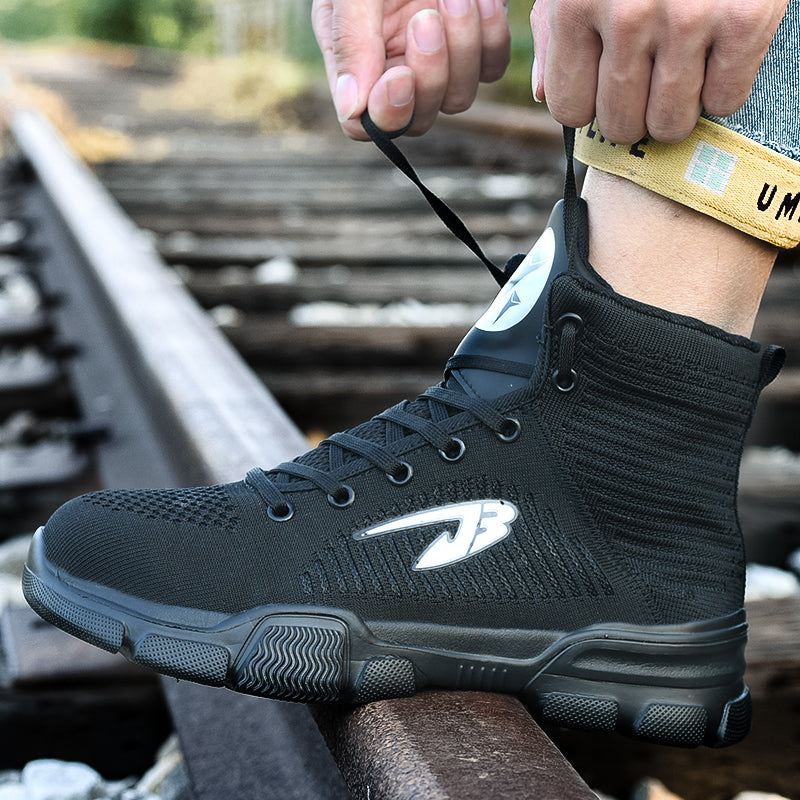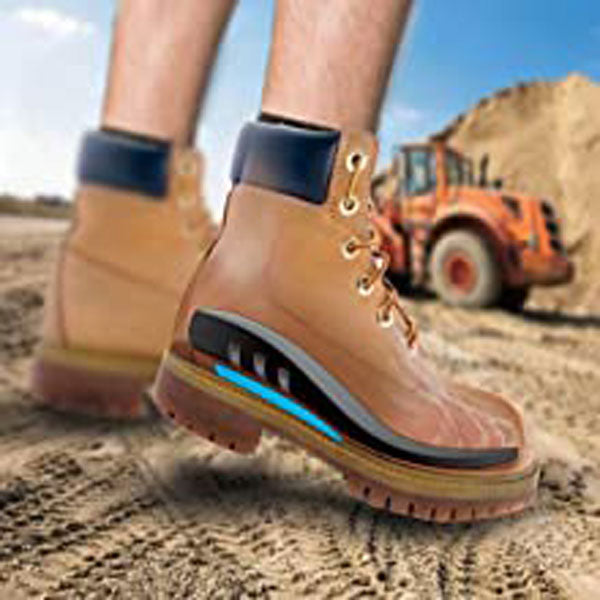Don't wait until the last minute to prepare for the upcoming colder months. Get your house and your family ready for a great winter now.
As the weather starts to cool down, it's time to think about making your home efficient and enjoyable for the winter months. We've compiled an extensive list of fall projects you may want to tackle. From maintaining your home to making it look more attractive to adding something the family can enjoy, these tasks will help make your house a home you'll love.

Fall Home Maintenance
Upgrade and maintain your HVAC system.
If you're running an outdated furnace, now is an excellent time to get a new one. You'll heat your home more efficiently and save money in the long run.
Fall maintenance for your furnace is best done in late summer or early fall before you have to turn the heat on for the first time.
- Have an HVAC professional out for a furnace tune-up service.
- Stock up on a few filters and mark your calendar for when it's time to change them.
- Clean out your vents. A vacuum hose extension works fine here.
- Make sure all your vents can freely blow warm air toward the center of the room.
- Inspect the flue that sends exhaust outside of your home for any leaks.
Flush your hot water heater.
This is a job you can do yourself, but it's not expensive to hire a professional. It will help remove sediment and prolong your water heater's lifespan.
Winterize your air conditioner.
- Clean debris out around it and use a garden hose to rinse the unit.
- Allow the unit to dry, cut off electrical power at the circuit, and install rubber pipe insulation around the pipes.
- Cover the unit with an A/C cover.
Test the sump pump.
- Examine the outside pipe and remove any debris that may be clogging it.
- Pull the pump cord from the float cord plug at the outlet, and plug only the pump cord back into the outlet. The pump should start running. Return the plugs to their original conformation in the electrical outlet.
- Slowly pour water into the sump crock until the sump pump switch activates, and then stop. Watch as the water pumps out to ensure the pump turns itself off. Slowly pour more water in to double-check that the pump turns on again.
- Replace the sump pump if either of these two tests fails.
Weatherproof your doors.
Examine your doors every year to ensure they're properly weatherproofed. This not only saves you money in utility bills but also prevents water from getting into your home. You don't want moisture to get inside and eat away at the flooring, creating mold and mildew issues.
Locate leaks by inspecting the weather stripping and gaps in your doors. Fill up minor gaps and replace damaged weather stripping on the interior or exterior of doors.

Prepare your fireplace.
Even if you don't use your fireplace, have your chimney inspected every year to make sure it stays clear and doesn't leak. The chimney is often a point of failure for roof leaks.
The chimney and fireplace should be deep cleaned every year to prevent fires, in addition to being inspected when you use them during the winter months.
Clean out your gutters.
Spend an hour or so cleaning out your gutters to prevent roof damage, leaks, ice damming, and foundation issues. Early fall is the best time to do this. If you live where you have more falling debris from trees, we recommend you clean your gutters every three months. Otherwise, once in the spring and once in the fall should be sufficient.
Winterize your in-ground pool.
It's recommended that you start this process when temperatures continually drop to 65 degrees F or lower. Algae thrive in warmer temps, so you don't want to start this until it cools off enough.
- Store away your pool toys and accessories, hosing off dirt and algae.
- Remove leaves and other debris from the pool. Remove all debris from the bottom with your pool vacuum, and then brush the floor and sides.
- Cover your pool after this in between steps.
- One week before you close the pool, test the water.
- You want these readings:
- Alkalinity 80-150 ppm
- pH level 7.2-7.6
- Calcium hardness 175 and 225 ppm
- Chlorine level 1 - 3 ppm
- Adjust by balancing the alkalinity before the pH level.
- Take a day or two to lower the water level if you don't use a skimmer level and you live where the water will freeze. Follow your pool guide's instructions.
- Clear water from pool lines with a blower, then plug them with expansion plugs. (You may want to add pool antifreeze.)
- Drain all equipment (filter, pump, heater, etc.)
- Remove and clean filters.
- Store the filter and pump indoors for the winter.
- Add shock to kill bacteria and add algaecide to kill algae. Follow the package directions. This could take a few days, depending on the type of shock you use.
- Cover the pool with your safety or winter cover so that it's tight-fitting and doesn't have holes or tears.
Winterize your sprinklers.
- Shut off the water at the main valve. If your system uses potable water, shut off both of the backflow values also.
- Shut off the automatic timer. Some systems may have a "rain mode" to allow you to power down the timer without losing your settings.
- Drain out any water that may be in the system by following your system's specs or calling a professional in.
- Insulate above-ground parts by wrapping them in foam covers or insulation tape.
- Read the user manual to catch any specific actions you may need to take for your type of sprinkler system.

Get the yard ready.
Spread mulch around plants.
Many suggest you wait until after a hard frost in the fall to apply winter mulch around your plants. Mulching helps prevent soil erosion, suppresses weeds, and protects the plants from moisture loss and temperature changes.
Choose organic mulches, such as pine needles, sawdust, straw, grass clippings, and fallen leaves. If you use straw, purchase weed-free straw or compost it for a full year before you use it to avoid a weed problem in the spring.
You can use fall leaf mulch to protect your plants if you have trees. It's free, and it's seedless. Spread them 8 cm deep and supplement with 1 cup of nutrient-rich fertilizer for every cubic foot of leaves.
Don't use grass clippings if you use herbicides on your lawn.
Clean up your lawnmower and other yard tools.
Keep mowing for as long as possible, but once the mowing season is over, it's time to put everything away. Clean and dry all your yard and garden tools. Store them in a dry place for the winter.
Lawnmower fall maintenance:
- Add a fuel stabilizer to your gas tank and run the mower until it empties and stops to clean all the lines.
- Drain 4-cycle engines of oil for the winter and note to add new oil in the spring.
- Scrape off the stuck-on grass and dirt from under your mower.
- Change the spark plugs and air filter.
Add nutrients to your lawn.
Fall is the best time to treat your lawn. Nutrients will help provide food for the grass plant and help them be vibrant, strong, and ready to grow again in the spring.
Ornamental trees, shrubs, and woody stem plants feed through their roots during October and November. Supply them in the fall with deep root fertilization to give them the strength to survive extreme drying conditions and fill out to their fullest potential.

Work on home improvement projects.
Enhance your home's exterior.
- Paint the front door while the temperature is mild and humidity is low.
- Touch up painted areas on your house or give it new life with a different color.
- Make sure your outdoor lighting works properly, and consider installing garden lights to add some charm.
- Stain your deck during optimal temperature days of 50-90 degrees F.
- Powerwash your home for the fall to add curb appeal and help protect it.
Fix, repair, and clean.
- Replace missing shingles on the roof before winter weather hits.
- Clean your carpets to improve indoor air quality for the months when your doors and windows are closed.
- Fix small leaks and touch up interior molding and trim.
- Clean dust off your ceiling fans and switch their direction to draw warm air down during the winter months.
- Check the attic for air leaks and fix them.
Replace single-pane windows
If you have single-pane windows, it's time to replace them. It's likely they're 50 years old or more by now. The money you spend now will come back to you in unexpected benefits.
- Energy efficient windows will save you on heating and cooling costs, as well as relieve some of the wear and tear on your HVAC.
- Newer windows are smoother to operate and clean.
- You'll have better sound insulation from street and neighborhood noises, helping you sleep and not have to play movies as loudly.
- Newer windows have better UV ray protection, which helps preserve your flooring and furniture.
- Many windows are made with materials that only need painting for up to five years.
- You'll enjoy a low risk of window condensation that can lead to wood rot or paint deterioration.
- They'll improve your home's look.
Update your kitchen.
Fall is the perfect season to update your kitchen cabinets. You'll have a lot of trendy ideas to draw from, as this is the time of year when people are thinking about the meals they'll cook inside versus on the back deck. The work will be more enjoyable while the temperatures are warm enough to have the doors open but not so hot to make it uncomfortable.
Updating your kitchen can involve a complete renovation to just touching up your cabinets. A thorough fall cleaning of your cupboards and shelves and small touches such as replacing the cabinet hardware can give your kitchen a new look.
Are you tired of your countertops? Replace or refinish them for a fresh look.
Dress for safety and comfort.
It's important to protect yourself while working around your home. Wear gloves when working with cleaning solvents and long sleeves while trimming any hedges or bushes.
Choose comfortable shoes designed to protect your feet from any sharp objects, dropped items, and liquid hazards you may encounter during your home maintenance duties. Indestructible Shoes carries a wide variety of styles to fit your personality and functional needs. Visit our bestsellers collection and find the protective footwear you'll love wearing this fall.









